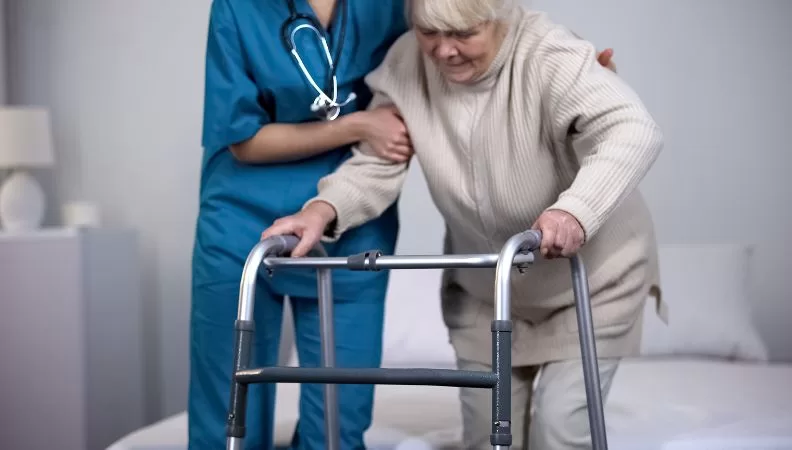The Total Hip Replacement Protocol
“The total hip replacement protocol, also referred to as total hip arthroplasty, is a surgical procedure aimed at relieving pain and improving function in patients with severe hip joint damage. Understanding the total hip replacement protocol, including indications, surgical techniques, and recovery guidelines, is essential for a successful outcome. This comprehensive guide explores all aspects of the procedure, such as surgical approaches, postoperative care, rehabilitation protocols, potential complications, and long-term results. By learning about these components, patients can make informed decisions about their treatment and know what to expect during recovery.”**
Total Hip Replacement Overview
Total hip replacement suggests the operative, excision of an arthritic bone and cartilage from the articular surface of the hip joint and the incorporation of prosthetic devices. This technique is frequently indicated for patients whose quality of life may be unduly compromised by chronic hip pain or mobility problems.
Key Components of THR
Prosthetic Components: In general, the technique consists of replacing the destroyed femoral head with a metal stem for insertion into the femur and a metal socket for restoring the worn cartilage surfaces of the acetabulum.
Materials Used: Co-Cr alloys are used commonly as elements for the femoral head in prostheses and for the acetabular device are polyethylene or ceramic. These materials are chosen for their durability and biocompatibility.
Benefits of Total Hip Replacement
Pain Relief: Most patients experience significant relief from chronic pain.
Improved Mobility: An improved actively available range of motion permits patients to escape from daily living.
Quality of Life: Many patients report improved overall well-being and satisfaction post-surgery.
Indications for Total Hip Replacement
Total hip replacement is used in many clinical conditions leading to debilitating pain and dysfunction. Common indications include:-
Severe Osteoarthritis: The most frequent hip pain and impairment that is associated with cartilage degradation.
Rheumatoid Arthritis: An inflammatory rheumatic disease that can cause joint damage.
Avascular Necrosis: A disease characterized by occlusion of blood supply to the femoral head, resulting in bone infarction and joint collapse.
Hip Fractures: Especially in the elderly such as where conventional repair mechanisms do not recover the necessary function.
Patient Selection Criteria
Not all patients are suitable candidates for THR. Factors influencing candidacy include:-
- Age and overall health status.
- The severity of symptoms and impact on daily life.
- Previous treatments and their effectiveness.
Surgical Approaches in THR
There are a few different options for surgical procedures for performing total hip replacement, each having its own benefits and drawbacks:-
Anterior Approach
Description: The surgeon accesses the hip joint from the front of the body.
Advantages: Minimally invasive and reduced muscle trauma, therefore, with short recovery periods.
Precautions: Patients are restricted from moving specific ranges of motion (e.g., hip extension) as part of recovery.
Posterior Approach
Description: The surgeon approaches the joint from the back.
Advantages: Offers superior access to the joint; widely applied to primary and revision procedures.
Precautions: Patients are advised to avoid flexing the hip past 90 degrees and internal rotation initially.
Lateral Approach
Description: Laparotomies are performed on the side of the hip.
Advantages: Preserves important muscles around the hip joint.
Precautions: Similar movement restrictions as other approaches.
Other Considerations
Surgeons may select an operative approach according to the patient’s anatomy, underlying conditions, and operative experience. There are the risks and the benefits of every method that should be discussed with patients before the surgery.
Preoperative Assessment
A full pre-surgical appraisal is necessary in order to determine patient fitness and health prior to surgery. This includes:-
Components of Preoperative Assessment: –
Full medical history consultation, including history of operations, coexisting conditions (including diabetes), and use of medications.
Physical examination assessing overall health status and mobility limitations.
Imaging (X-ray or MRIs) for assessment of the joint condition and planning of the surgical operation.
Pain Management Strategies
Effective pain relief post-surgery can involve various strategies:-
- Pain Management Techniques
- Medications
- Non-steroidal anti-inflammatory drugs (NSAIDs) for mild to moderate pain relief.
- Opioids can also be used for more intense pain but must be used carefully as they are addictive.
Nerve Blocks or Local Anesthetics: Nerve Blocks or Local Anesthetics:-
Administered during surgery to provide immediate postoperative pain relief.
Non-pharmacological Methods:-
Intermittently applied ice therapy can be effective in decreasing edema and pain.
Postoperative Care
Postoperative management is of utmost importance for a successful postoperative outcome of total hip arthroplasty. Key aspects include:-
Immediate Postoperative Care
Close monitoring of vital signs for any red flags of complications e.g., infection or thrombosis).
Effective pain control through a combination of medications including NSAIDs, opioids, or nerve blocks.
Infection Risk Management
Infection is a significant concern following surgery. Preventative measures include:-
Administration of prophylactic antibiotics before surgery.
Maintaining sterile conditions during surgery.
Teaching patients how to recognize infection (such as inflammation, redness, swelling, and fever).
Rehabilitation Protocols
Rehabilitation of hip replacement is very important to maximize mobility and strength. A structured rehabilitation protocol typically includes several phases:
Phase I – Early Recovery (Weeks 1-2)
Focus on pain management through medications and ice therapy.
Perform gentle mobility exercises (eg., ankle pumps or heel slides) from the bed or sitting position.
Use assistive devices like walkers or crutches to promote safe ambulation.
Phase II – Motion Phase (Weeks 2-6)
Outpatient physical therapy starting with range of motion (ROM) exercises in safe boundaries:-
Some examples are leg lifts, seated marches, and passive (gentle stretching) exercises.
Gradually increase walking distance while maintaining safety precautions.
Phase III – Strengthening Phase (Weeks 6-12)
- Exercises to strengthen muscles of the hip girdle, e.g:-
- Straight leg raises
- Clamshells
- Mini squats
Emphasize low-impact activities like swimming or cycling as tolerated.
Phase IV – Advanced Strengthening/Return to Activity (Weeks 12+)
Encourage a gradual return to recreational activities with caution:
Activity, eg, golf or gentle walking, may be restarted according to personal progress.
Complications of Total Hip Replacement
While THR is generally safe, it is essential to be aware of potential complications:-
Common Complications Include: Infection risk at the surgical site or deeper tissues; strict hygiene practices are critical during recovery.
Dislocation risk related to operative approach; compliance with movement limitations is important in rehabilitation.
Blood clot; prophylactic therapy with anticoagulants may be used to avoid deep vein thrombosis (DVT).
Nerve injury; extremely rare but occurring in some; can cause leg weakness or numbness.
Long-term Outcomes of THR
Patients generally experience good pain relief and functional improvement after THR. Long-term outcomes include:-
Expected Results:-
High satisfaction rates; studies indicate that over 90% of patients report satisfaction with their results after THR.
Longevity of implants; hip implants typically last between 15 to 25 years depending on factors like activity levels, age at surgery, and implant type.
Higher quality of life; the patient may recover their ability to do activities of daily living, such as walking, stairs, and recreation.
Patient Education
It is important to educate patients on their surgery, the postoperative recovery process, and lifestyle changes in order to achieve successful results:-
Essential Education Topics:-
Knowing what to do in the time leading up to, at, and after surgery.
Importance of adhering to rehabilitation protocols—exercises that promote healing and prevent complications.
Knowledge of symptoms that may indicate complications—patients should know when to call their doctor.
Functional Recovery
Recovery time after hip surgery varies by individual but generally includes:-
Recovery Timeline: –
Post-surgical initial recovery usually takes 1–3 days in the hospital; the majority of the patients are discharged as soon as they can safely ambulate with help.
Outpatient rehabilitation is generally initiated between the seventh and tenth day of discharge; most will see substantial change within 3 months but will often also continue rehabilitation for 6 months or longer depending on progress.
Total Hip Replacement Protocol: Assistive Devices Post-THR
Mobility devices following hip replacement are of paramount importance to maintain safety during rehabilitation.
Common Assistive Devices Include:-
Crutches or walkers in early recovery stages in order to encourage safe ambulation without overloading the affected leg.
As fitness increases; they offer further assistance with walking unaided.
Return to Activities
Patients are encouraged to resume recreational activities gradually based on their recovery progress:-
Recommended Activities Post-THR:– Low-impact sports like swimming or cycling are particularly appropriate in the early stages of recovery because of their minimal impact on the joints.
It should be done with caution once strength is back with the gradual resumption of more physically demanding activities such as jogging or hiking.
Total Hip Replacement Protocol: Criteria for Discharge from Rehabilitation
Criteria for discharge from rehabilitation typically include:-
Independence in performing activities of daily living, such as dressing, bathing, and walking unaided.
Sufficient strength demonstrated during therapy sessions—patients should show progress in muscle strength around the hip joint.
Attainment of functional mobility goals—patients should meet specific milestones set by their rehabilitation team before discharge.
Total Hip Replacement Protocol: Advances in THR Techniques
Recent advancements in minimally invasive techniques have improved recovery times and reduced complications associated with total hip replacement surgeries:-
Innovations Include: – Robotic-assisted minimally invasive surgery for biologic, and in particular, osseous implant placement this technology has the potential to produce superior alignment, and subsequently, superior, longer-lasting outcomes.
Revised recovery protocols that include multimodal pain management—that is, methods to reduce opioid consumption while also improving comfort using a diverse range of non-pharmacological interventions.
Expanding Each Section
In order to achieve your desired word count efficiently and to produce a consistent quality of content throughout this guide on total hip replacement guidelines:-
Incorporate Case Studies: Present examples should demonstrate not only patients’ experiences before and after surgery but also their rehabilitation path.
Expert Opinions: Add insights from orthopedic surgeons discussing best practices in THR procedures based on current research findings or clinical trials related specifically to different surgical approaches utilized today.
Statistical Data: Present data comparing outcomes across various demographics (age groups) regarding success rates associated with different types of implants used during THRs over time which could help highlight trends observed within this field over decades past until present-day advancements made available now!
Illustrations/Images: The surgery used in each procedure is illustrated by diagrams of surgical techniques, while the postoperative care routine, as depicted by photo, is shown for each phase of rehabilitation to provide clarity as it involves dealing with complex concepts during the rehabilitation phases.
Detailed Rehabilitation Exercises: Provide descriptions along with illustrations showing specific exercises recommended at each phase post-surgery including frequency/duration guidelines aimed towards optimizing recovery times effectively while minimizing risks associated with complications arising thereafter if not adhered to properly!
Patient Testimonials: Share quotes/testimonials from individuals who underwent THRs discussing how they navigated challenges faced throughout their journeys toward regaining mobility/functionality post-surgery highlighting emotional aspects involved too!
FAQs Section: Deal with some of the questions/issues raised by prospective patients considering this procedure, alleviating some of the fear of unknowns beforehand!
Connection To Medical Tourism: Discuss how medical tourism impacts accessibilities regarding affordable options available internationally pertaining specifically towards those seeking quality care abroad especially relevant given rising costs associated domestically within certain regions today!
conclusion
the total hip replacement protocol serves as a vital framework for ensuring successful outcomes for patients undergoing hip arthroplasty. By following the total hip replacement protocol, individuals can experience improved mobility, reduced pain, and a better quality of life. This protocol emphasizes proper surgical techniques, postoperative care, and rehabilitation, which are crucial for recovery. Understanding and adhering to the total hip replacement protocol empowers patients to make informed decisions, setting the foundation for long-term health and well-being.



